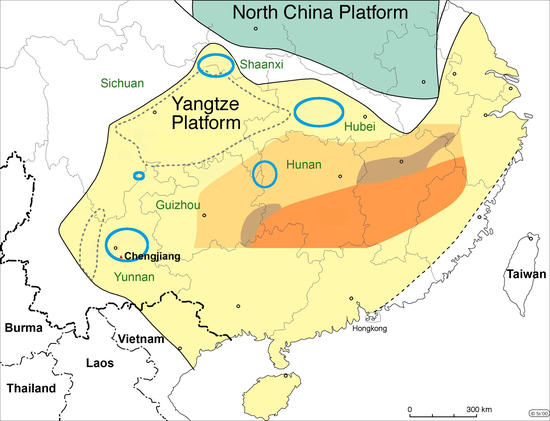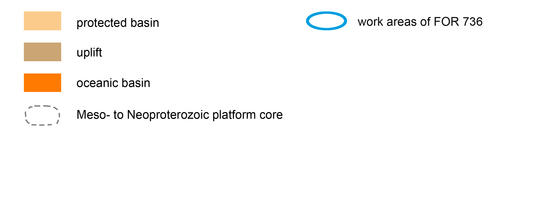Work Area
Work Area 1 - The Yangtze Platform
South China's Yangtze Platform is one of the forerunners among popular and promising regions to investigate the events leading up to and including the Precambrian-Cambrian boundary because its strata are thick, only moderately deformed, cover an extensive area, span a variety of facies and lithologies, and are mostly readily accessible.
China consists of three major cratons (the Yangtze Platform, the Tarim Platform and the North China Platform) and a number of smaller proterozoic massifs. Both the Yangtze Platform in South China and the Tarim Platform in the Northwest cover the critical stratigraphic interval for the early metazoan evolution: the Ediacaran to Middle Cambrian (635 Ma - ca. 520 Ma).


Research activities of FOR 736 during the first funding period concentrated on the Yangtze Platform which largely was a stable shallow-marine platform during the Ediacaran and the Cambrian. A growing number of geochemical, sedimentary and stratigraphic studies, however, indicate that many of the shallow-water environments, in particular near the classical Three-Gorges region, represent partially restricted, possibly "shelf-lagoonal" settings so that geochemical profiles may not all (and not entirely) reflect mean global seawater composition.
Work Area 2 - Kazakhstan
In order to validate our data from South China, FG teams have begun to also work in the Karatau Mountains of southern Kazakhstan. These apparently also had a low-latitude but (in contrast to parts of the Yangtze Platform) apparently open-marine position during the Ediacaran and Cambrian. We are currently (2012) evaluating our data; watch this site for forthcoming publications !
